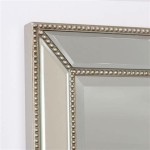Can You Screen Mirror From One Samsung TV to Another?
The ability to share content seamlessly across devices has become increasingly important in modern homes and offices. Samsung televisions, known for their smart features and connectivity options, offer various methods for displaying content from one device on another. However, the question of whether one can directly screen mirror from one Samsung TV to another requires a nuanced understanding of the available technologies and their limitations.
Direct screen mirroring, in the context of televisions, refers to the ability to project the display of one television onto another without the need for intermediary devices like smartphones, tablets, or computers. This functionality could be useful in various scenarios, such as showcasing presentations across multiple screens in a business setting, extending a gaming experience to a larger display, or simply sharing content from a primary TV in the living room to a secondary TV in another room. Understanding the technical capabilities and limitations of Samsung TVs is crucial to determining if this direct mirroring is feasible and how to achieve it if possible.
While Samsung TVs boast advanced features like screen mirroring and Smart View, these are generally designed for interaction with external devices such as mobile phones and computers. The primary purpose is to facilitate the display of content from these devices on the TV screen. Native support for direct screen mirroring between two Samsung TVs, without utilizing an external source, is not a standard or widely advertised feature. However, alternative solutions and workarounds can be explored to achieve a similar outcome, even if they require leveraging auxiliary hardware or software.
Understanding Screen Mirroring Technologies on Samsung TVs
Samsung TVs incorporate several technologies that enable screen mirroring, primarily designed for connectivity with smartphones, tablets, and computers. These technologies are essential to understanding the potential for mimicking screen mirroring between two televisions.
Miracast: Miracast is a wireless display standard that allows devices to mirror their screen to a compatible display without requiring a Wi-Fi network. The technology creates a direct wireless connection between the devices. Samsung TVs typically support Miracast, allowing users to mirror their smartphone or computer screen directly onto the TV. However, Miracast is inherently a one-to-one connection. One device acts as the source, and the other acts as the receiver. Employing two Samsung TVs using Miracast to mirror each other simultaneously is functionally impossible without an intermediary device. One TV cannot both transmit and receive Miracast signals at the same time.
Smart View: Smart View, developed by Samsung, allows users to share content between their Samsung devices and their Samsung TV. This technology enables users to control the TV from their phone, stream media files, and even mirror their phone’s screen. Similar to Miracast, Smart View is primarily designed for mobile device interaction with the TV. While it enhances the user experience related to content sharing, it does not provide a direct method for mirroring one Samsung TV to another. Smart View focuses on the TV as a display endpoint for mobile devices.
AirPlay 2: AirPlay 2 is Apple's wireless streaming technology, enabling users to stream content from their Apple devices to compatible TVs and speakers. Many modern Samsung TVs support AirPlay 2, allowing users to mirror the screen of their iPhone, iPad, or Mac. While AirPlay 2 is undoubtedly valuable for users within the Apple ecosystem, its primary function is to connect Apple devices to the TV, not to enable direct television-to-television screen mirroring. Two Samsung TVs cannot wirelessly mirror each other using AirPlay 2.
These technologies, while powerful, are oriented towards enabling devices such as smartphones, tablets, and computers to share content with the TV. They are not inherently designed to facilitate direct screen mirroring between two standalone Samsung TVs.
Alternative Methods for Achieving a Similar Outcome
Although direct screen mirroring between two Samsung TVs is not natively supported, alternative methods can be employed to achieve a similar outcome. These methods typically involve the use of intermediary devices or network-based solutions.
HDMI Splitters and Extenders: One approach involves using an HDMI splitter to duplicate the HDMI output from one Samsung TV and then utilizing HDMI extenders to transmit the signal to a second TV. The primary Samsung TV's HDMI output would connect to the HDMI splitter. The splitter then creates two identical HDMI signals. One signal would connect to the primary TV's display, allowing it to function normally. The other signal would be sent via HDMI extenders to the second Samsung TV. HDMI extenders can transmit the signal over longer distances, often using Ethernet cables. This setup effectively duplicates the content displayed on the first TV onto the second TV, using a wired connection.
The advantage of this method is its relative simplicity and reliability. However, it requires physical cables and HDMI splitters and extenders, which can add to the cost and complexity of the setup. Furthermore, this is a duplicated signal, meaning there is no independent control of the content displayed on the second TV. It mirrors exactly what is being shown on the first TV.
Network-Based Streaming: Another approach involves using network-based streaming solutions. This typically involves streaming the content from one Samsung TV through a media server or a network-attached storage (NAS) device and then accessing that stream from the other Samsung TV. The first Samsung TV would effectively act as a source, streaming whatever is displayed on its screen to the network. The second Samsung TV would then use a media player application to connect to the network stream and display the content. This can be achieved by using third-party streaming applications or leveraging media server software running on a computer connected to the same network.
The advantage of this approach is its flexibility and potential for wireless connectivity, depending on the network infrastructure. However, it can be more complex to set up and may require technical expertise. Latency can also be a significant issue, meaning that there might be a noticeable delay between what is displayed on the first TV and what is displayed on the second TV. This latency can render the solution unsuitable for real-time applications like gaming.
Using a Computer or Streaming Device as an Intermediary: A third approach involves using a computer or a dedicated streaming device (like a Chromecast, Roku, or Apple TV) as an intermediary. The first Samsung TV's output is connected to the computer or streaming device via HDMI. The computer or streaming device then streams the content over the network to the second Samsung TV. The second Samsung TV uses a corresponding app or built-in functionality to receive the stream and display the content. This setup essentially uses the computer or streaming device as a bridge between the two televisions.
This method offers a balance between simplicity and flexibility, allowing for wireless connectivity and relatively easy setup, depending on the streaming device used. It does require an additional device, which adds to the cost and complexity. Latency can also be a factor, depending on the network conditions and the performance of the streaming device.
Limitations and Considerations
Regardless of the chosen method, there are several limitations and considerations to keep in mind when attempting to mirror content between two Samsung TVs.
Latency: Latency refers to the delay between the display of content on the first TV and its appearance on the second TV. This is a critical factor, particularly for applications like gaming or real-time presentations. Wired connections generally offer lower latency compared to wireless connections. Network congestion and the processing power of the intermediary devices can also contribute to latency.
Image Quality: The image quality of the mirrored content may be affected by the chosen method. HDMI splitters and extenders typically preserve the original image quality, provided that high-quality cables and components are used. Network-based streaming, however, may involve compression, which can reduce image quality. The quality of the network connection and the capabilities of the streaming devices also play a critical role in determining the final image quality.
Cost: The cost of implementing a screen mirroring solution can vary depending on the chosen method. HDMI splitters and extenders can be relatively inexpensive for simple setups. However, more complex solutions involving network-based streaming or intermediary devices can be more costly. The cost of additional cables, software licenses, and technical support should also be considered.
Compatibility: Ensuring compatibility between the various components is crucial. HDMI splitters and extenders must be compatible with the HDMI version supported by the Samsung TVs. Network-based streaming solutions require compatible software and hardware on both TVs and potentially on an intermediary device. Thorough research and testing are essential to ensure that all components work together seamlessly.
In summary, while direct screen mirroring between two Samsung TVs without an intermediary device is not a natively supported feature, several alternative methods can be employed to achieve a similar outcome. These methods involve using HDMI splitters and extenders, network-based streaming, or intermediary devices like computers or streaming boxes. Each method has its own advantages and limitations in terms of latency, image quality, cost, and compatibility. The choice of method depends on the specific requirements of the application and the available resources.

What Is Screen Mirroring And How Do I Use It With My Samsung Tv Mobile Device

Best Ways To Screen Mirror Samsung Tv In 2024

Screen Mirroring To Your Samsung Tv
How To Activate Screen Mirroring On A Samsung Tv Quora

What Screen Mirroring Is And How Do I Use It With My Samsung Tv Ph

Screen Mirroring To Your Samsung Tv

Best Ways To Screen Mirror Samsung Tv In 2024

Screen Mirroring To Your Samsung Tv

A Guide To Screen Mirroring From Android Samsung Lg Sony And Roku Tvs Dignited

Best Ways To Screen Mirror Samsung Tv In 2024








